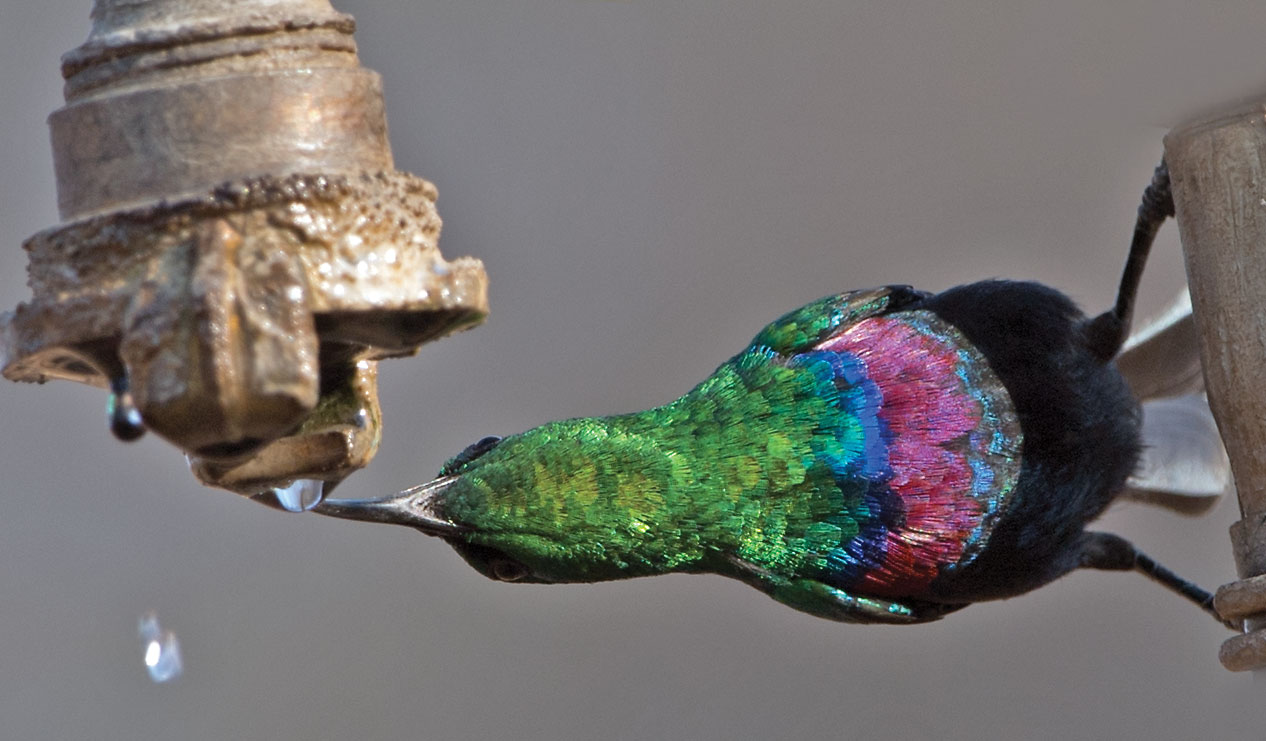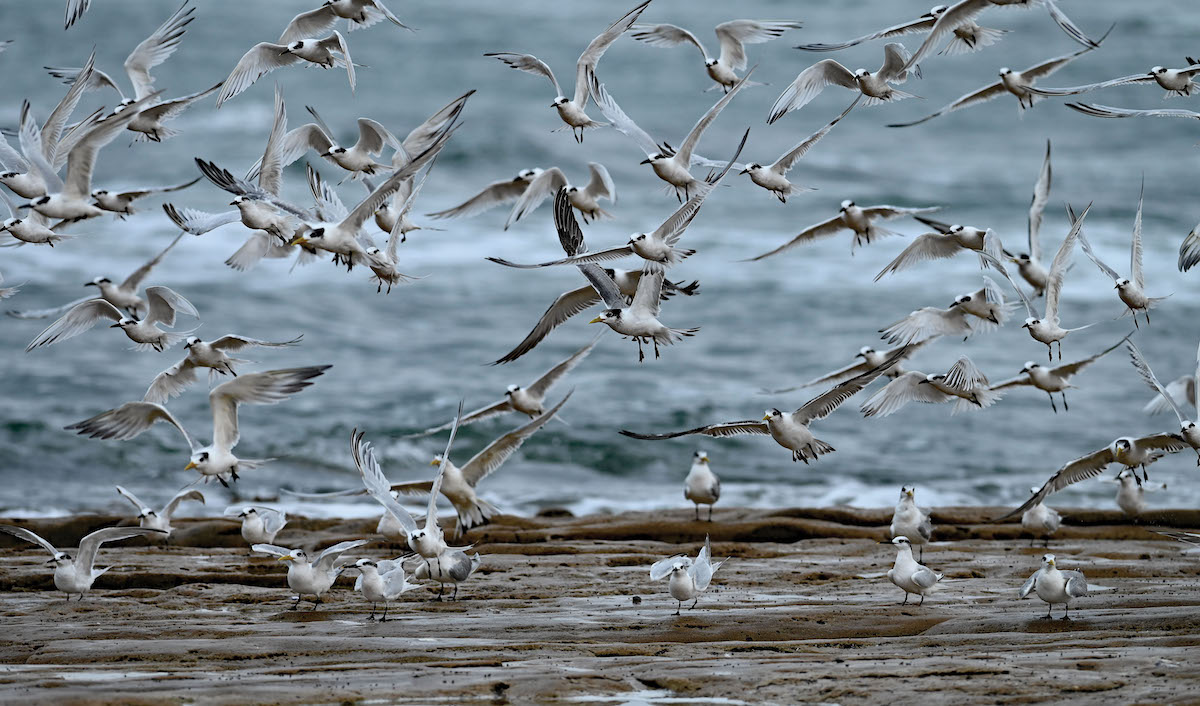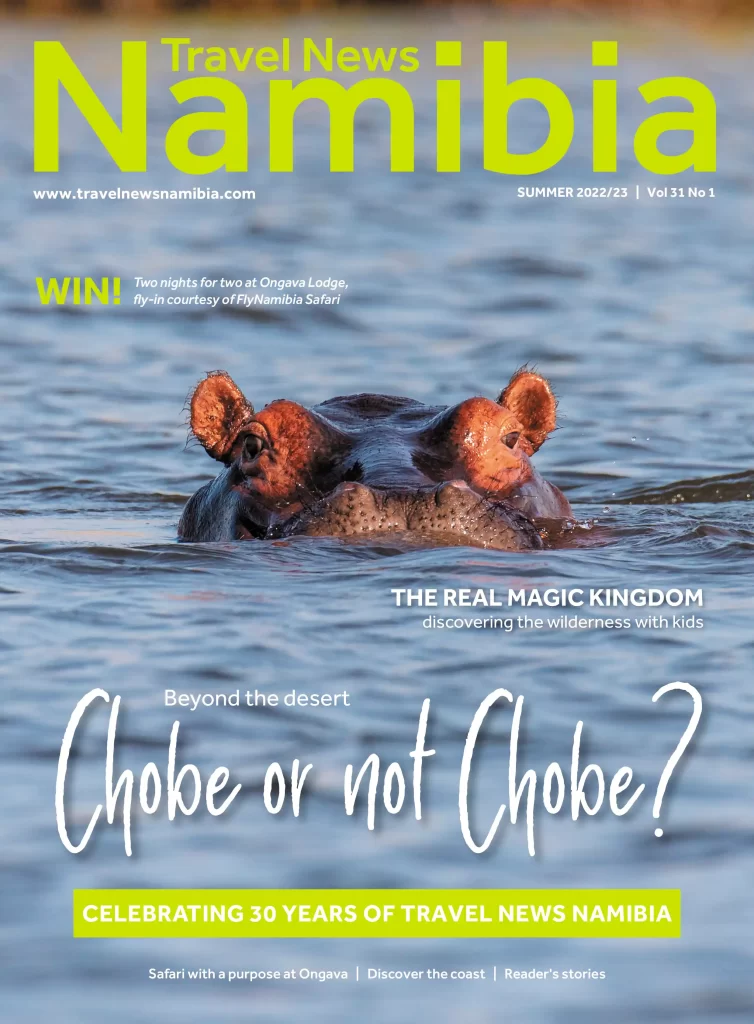

BIRDING WITH POMPIE – A beginner’s guide to twitching
Text & Photographs – Pompie Burger
the Summer 2022/23 issue
Before you can become a bird watcher you need the following: a bird book, binoculars and a cellphone (imagine that!). Later you will realise that you also need a bit of patience. A good wife or loving partner will of course be beneficial – ideally one who is also an avid birder or, at the very least, extremely patient with your birding efforts. Knowing someone who is a bird expert and willing to guide you through the process will be a massive bonus.
The first question would be where to start? In each and every birding manual they will tell you to start in your own backyard. Yes, that might be the cheapest option, or the lazy option, sitting on the stoep with your sundowner, be it at six in the morning (a.k.a. the regmaker) or six in the evening, smoking your first (or last) cigarette of the day. From here you can call your wife to bring your binoculars and bird book. (If you are female you’ll likely have to fetch it yourself.) Unfortunately you might be staying in Aus where there are only about 20 bird species. Chances are, after a few days you will get bored seeing a Gray’s Lark for the hundredth time. So, if you can save a few Nam dollars on your drinking and smoking money, the next option is to read this article.
My infamous career as a bird watcher started when I was 24 years old. A very dear and kind friend invited me to go with him and his wife to Ndumo Game Reserve in Northern KwaZulu-Natal. If they told me beforehand that this will end up in a birding trip, I would have refused point blank. At that stage there were way more important activities that seemed more attractive and enjoyable. His wife was indeed married to him, which means that option was out of the question. So what was left for me to do? What I did was to see my first African Fish Eagle, at that stage the most spectacular, beautiful and arrogant bird I have ever seen. Hearing its spectacular call was the full catastrophe. I took a whole film (36 pictures) of this beautiful bird. Looking back at the pictures (yes, I do have a memory example of that picture) is indeed mind boggling. I could barely make out what it is in retrospect, because of the size of my million-dollar bird picture, but it certainly changed my life forever. Around the campfire I learnt that the White Stork we saw that afternoon is one of the highest-flying birds in the world, so if you can see one flying overhead, you can lay claim to having seen it (if you can look that high). After all is said and done, there were two important lessons to be learnt from this expedition: there is no age restriction for birding and, even more important, always start with the impressive and beautiful ones. You do not fall in love with the first woman you see; you only fall in love once you see a beautiful woman. That’s life.
Go to a place where you can see a lot of good-looking and impressive birds, where there is variety (the more the merrier). Start with the Southern Carmine Bee-eater colony at Mubala. If you return from your first birding journey and you have ticked off 50 to 80 new birds, you will never stop ticking. Being Namibian, I cannot think of any better place to start than in the Zambezi region. There might be birders that will tell you Etosha is the ultimate place, others will tell you Walvis Bay is even better. You can get as many opinions as there are destinations in Namibia to start.
The Kavango and Zambezi region will offer more than 400 of the more than 670 possible birds to see in Namibia, so to give your list a boost you know where to go. Walvis Bay might offer a lot of new birds, but remember, over 50% of the birds you will see you will not be able to identify. You might identify a few new species that have never been identified before, but remember this novelty will continue for a very long time. After more than 30 years of bird watching I still manage to find new birds never seen before.
The hilarity of mentioning a cellphone as part of your paraphernalia for bird watching might sound like a teenager not being able to let go of his cellphone. Yes, I hate cellphones. Youngsters are able to do and see everything possible on this little gadget in the palm of their hand. But admittedly, you can have your bird book on your phone, you have all the different bird calls at hand and you can take a picture of all your sightings to prove that you have indeed seen a bird never seen before. Apparently you can even record their call and play it back to an ornithologist.
The second important item is a bird book, even if you have a cellphone. Which and how many bird books do you need? There is a very easy answer: as many as possible. I can promise you there are indeed hundreds. Which one to start with is also not a problem, but according to the editor I am not allowed to do any advertising of books in articles for Travel News. The good news for Elzanne is that my first five bird books are all sold out and are now among the most wanted books in the world. So that is sorted, I cannot be blamed for advertising books that are not available anymore. Even better news is that the next five books are still available and the best news ever is that the ultimate field guide book, specifically for Namibia, is to hit the shelves within the next year. (If these last few sentences are not in the article, just phone the editor.)
Where not to start? Do not start in the dune belt in the desert. Birds need food and water. If there is no vegetation, it is unlikely that you will find any birds. Water is a bit more complicated, because most birds can fly, so they might occur in an area where there is no water as they can fly to a water body to fetch water, like a Sandgrouse carrying its water supply between its feathers. The birds that you will encounter in the desert are indeed some of the most interesting and special birds in Namibia. The Dune Lark occurring between the dunes is in fact our only true endemic. I have to mention that the term “endemic” only became a reality for me once I started my bird watching career. Namibia has 13 endemics, meaning they only occur in our country. Unfortunately, one or two of the other 12 species have slipped over the border to one of our neighbouring countries, so they are no longer true endemics, but who cares. If you want to impress a foreigner with your birding knowledge, you can mention one of these endemics as an afterthought.






